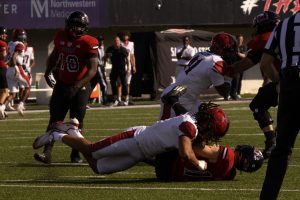Husband, wife design therapy approach
April 2, 1987
An NIU husband and wife faculty team developed a new approach for speech pathology which is receiving national attention for the treatment of speech and language disorders.
NIU’s Department of Communicative Disorders Chairman Jim Andrews and his wife Mary developed, refined and tested the new approach. In addition to being a therapist, Mary Andrews is an instructor at NIU in communicative disorders and in human and family resources.
Jim Andrews said they started blending principles from the fields of family therapy and speech pathology about four years ago. Mary Andrews said family therapy deals with troubled family members as a unit, while speech pathology involves only the individual with the speech or hearing problem who usually has a healthy, functional family.
The couple has presented the treatment model to pathologists, audiologists and speech-language pathologists at several national conferences including the American Speech-Language-Hearing Association in San Francisco, Washington D.C. and Detroit. In February, the model was presented in Chicago for the Illinois Speech and Hearing Association, Jim Andrews said.
The new model provides an alternative to the traditional treatment by speech and language pathologists, which primarily has been limited to the therapist and the patient, Jim Andrews said. Instead, he said parents, brothers, sisters and even grandparents are invited to cooperate in the treatment process.
Mary Andrews said that in the traditional model, the family members might get pushed aside despite their special insights into the patient and his or her home environment. In addition, she said skills learned in current treatment sessions often are not carried over to daily life.
Jim Andrews said he and his wife needed to work with families so they will know how to implement the idea. He said they designed a project to use as a service-delivery model, working with techniques and approaches.
During the past four years, Jim and Mary Andrews have used their new approach with a total of 40 patients, most of them children. “Since I am a certified speech pathologist and Mary is a certified family therapist, we see families one day a week at the Speech and Hearing Clinic on campus,” Jim Andrews said.
e said a typical case involves a child of 3 or 4 who is not talking. “We start by observing how they interact with the child.”
Mary Andrews said after the initial session, families are given assignments to carry out at home with the child. She said an instruction might be: “Play with the child and follow the child’s lead. Try to say what the child seems to be thinking. Accept their attempts at speaking, though they are not perfect. Reward the child for any vocalizing.”
She said family members often improve on the instructions they are given.






